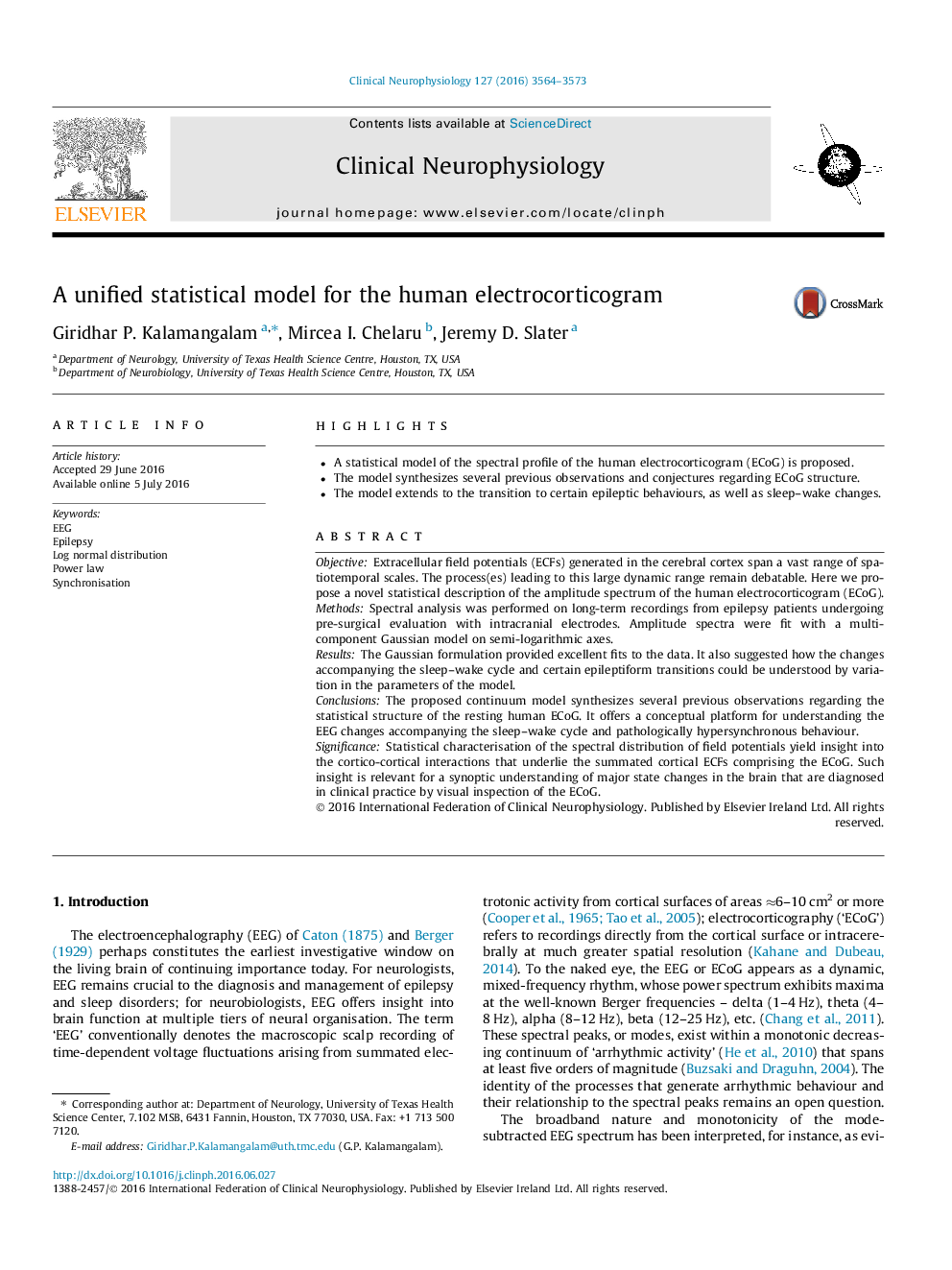| Article ID | Journal | Published Year | Pages | File Type |
|---|---|---|---|---|
| 5627475 | Clinical Neurophysiology | 2016 | 10 Pages |
â¢A statistical model of the spectral profile of the human electrocorticogram (ECoG) is proposed.â¢The model synthesizes several previous observations and conjectures regarding ECoG structure.â¢The model extends to the transition to certain epileptic behaviours, as well as sleep-wake changes.
ObjectiveExtracellular field potentials (ECFs) generated in the cerebral cortex span a vast range of spatiotemporal scales. The process(es) leading to this large dynamic range remain debatable. Here we propose a novel statistical description of the amplitude spectrum of the human electrocorticogram (ECoG).MethodsSpectral analysis was performed on long-term recordings from epilepsy patients undergoing pre-surgical evaluation with intracranial electrodes. Amplitude spectra were fit with a multi-component Gaussian model on semi-logarithmic axes.ResultsThe Gaussian formulation provided excellent fits to the data. It also suggested how the changes accompanying the sleep-wake cycle and certain epileptiform transitions could be understood by variation in the parameters of the model.ConclusionsThe proposed continuum model synthesizes several previous observations regarding the statistical structure of the resting human ECoG. It offers a conceptual platform for understanding the EEG changes accompanying the sleep-wake cycle and pathologically hypersynchronous behaviour.SignificanceStatistical characterisation of the spectral distribution of field potentials yield insight into the cortico-cortical interactions that underlie the summated cortical ECFs comprising the ECoG. Such insight is relevant for a synoptic understanding of major state changes in the brain that are diagnosed in clinical practice by visual inspection of the ECoG.
